
|  |

|  |
 The Bharathanatomy Series: Anatomical Movements and Directions - Sneha Rajagopalan e-mail: sneha.rajagopalan@hotmail.com September 14, 2019 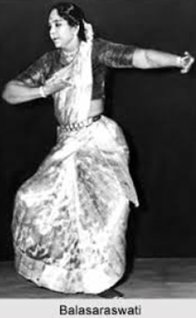 "Dancers are both athletes and artists," declared Morgot Fonteyn. This notion however is only being recognised in more recent times in the Indian classical dance world. If you have ever heard Kalakshetra's Jayachandran Surendran speak, you will know that historically, dance forms such as Bharatanatyam were not performed with the intention of performing to an audience. Thus, concepts such as body alignment, postural control and flexibility were almost non-existent. 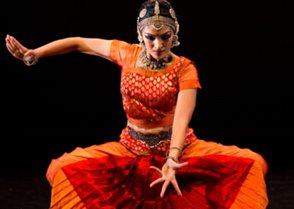 Traditionally, "araimandi" used to be a very comfortable sitting posture and "natyarambha" related movements used to be fluid and effortless. This was considered beautiful and graceful in those days, to the then perhaps only audience; the respective deities of the temples. In the present day though, our audience know what they want to see and for those of us that dance for ourselves, I am sure will also agree that we enjoy exploring the body's capabilities. We see beauty in this fascination termed as anga shudddhi. We recognise the magnificence of neatly aligned limbs in motion. We are awestruck by a dancer's inconceivable stamina and breath control. We are captivated by the body's ability to bend, balance and adapt itself immaculately and gracefully into each of our own unique and challenging choreographies. Essentially, grace is something that needs to be mastered today. Now this isn't to say that one approach is right or wrong but as one of my gurus Indira Kadambi repeatedly advises us, the audience is different, the purpose has shifted, the techniques have been modified and all in all, we need to come to terms with the fact that dance today is different. Therefore it goes without saying that our understanding, practice and training also need to change so as to fulfil the needs mentioned above. 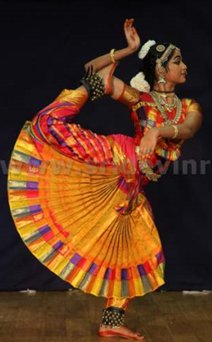 Have you ever heard of a professional athlete that only plays matches? That's just not possible. In order to perform to the best of their ability on game day, intense workouts, specific training and part practice need to occur on a daily basis to change incorrect movement patterns and for correct movements to become autonomous in the unpredictable game environment. Doing so also helps the athlete prevent injuries. Dancers must train for their game in the same way! Time and time again in our classes, my guru Archana Raja watches my dance, analyses the way each of my body part moves in the choreography and later breaks the entire choreography down to highlight where I lose balance or stamina. She explains exactly why I lose balance at a particular part in the choreography. This knowledge of why I am going wrong is also the key to not going wrong! As a physiotherapist myself, on a daily basis, I find myself educating and facilitating correct movement patterns of my patients who are recovering from sporting injuries or undergoing rehabilitation after a stroke. Only recently though have I actually applied these principles in my dancing and I have started to see changes that I am extremely excited about! The gist of Bharathanatomy is to create a sense of body awareness in the Indian classical dancer. To understand the origin of movement through comprehensive human anatomy and movement science, so that it may be combined with specific exercises, training principles and practice techniques to produce artistic design, explore and expand one's physical capacity as well as prevent and rehabilitate injuries. I hope that you will join me on this journey to unfolding and attempting to comprehend the marvel of the human body through this monthly Bharathanatomy series. We will begin the series by learning the basic anatomical terms used to describe where something is located or the direction of movement: ANATOMICAL LOCATION / MOVEMENT TERMINOLOGY: 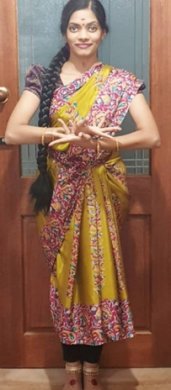 1. Anterior: Pertaining to the front of the body or forward direction. Example: Jumping portion of Paaichal Adavu forward or Utplavana Bheda (jumping anteriorly) 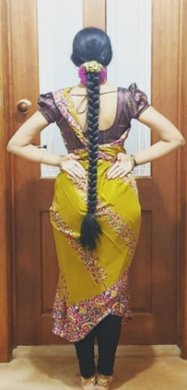 2. Posterior: Pertaining to the back of the body or backward direction. Example: Jumping portion of Paaichal Adavu backward or Utplavana Bheda (jumping posteriorly) 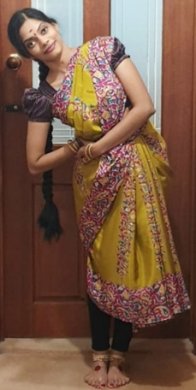 3. Lateral: Pertaining to the side of the body or side direction. Example: Jumping portion of Paaichal Adavu to the right and/or left or Utplavana Bheda (jumping laterally) 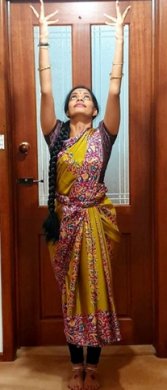 4. Superior/cranial: Pertaining to the head or upward direction. Example: Beginning of 8th Naatadavu or the 4th Paraval Adavu (superiorly or cranial direction) 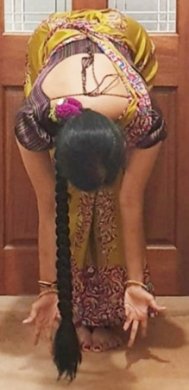 5. Inferior/caudal: Pertaining to the tail or downward direction. Example: Samapada Thattu in Alarippu (inferiorly or caudal direction) 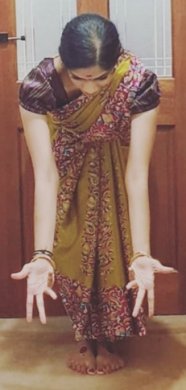 6. Anteroinferior: A combined movement in the inferior/caudal direction and slightly forward. Example: Beginning of the 5th Naatadavu Until next month, try this: Analyse the movements in the 8th Naatadavu and the entire 1st Paaichal Adavu (thath thei tham). Try and anatomically describe the movements involved in these adavus. Sneha Rajagopalan is a physiotherapist from Melbourne, Australia, working in the area of rehabilitation of patients with a neurological disorder as well as treatment of sporting related injuries of muscular and/or skeletal origin. A Bharatanatyam dancer of 20 years in the Kalakshetra style, she is currently learning under the tutelage of Archana Raja. She is in the process of starting up her own online physiotherapy practice under the name Bharathanatomy, for rehabilitation and exercise training for the specific population of dancers globally. Post your comments Provide your name and email id along with your comment. All appropriate comments posted with name and email id in the blog will also be featured in the site. |